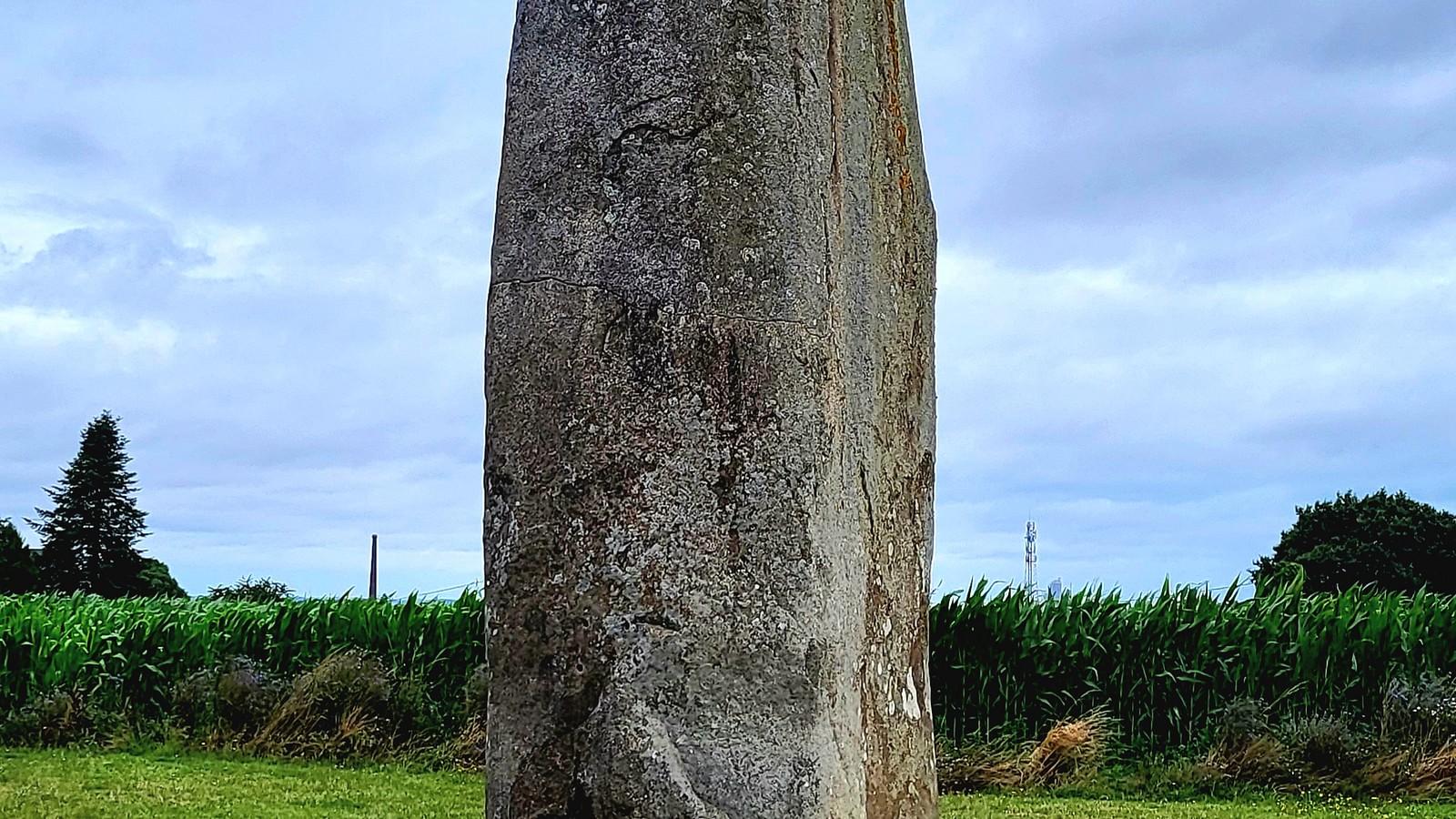Standing tall at 9.5 meters (31 feet) near Dol-de-Bretagne in Brittany, France, the Menhir de Champ-Dolent is one of the most impressive and mysterious megalithic monuments in Europe. This massive granite stone, dating back to the Neolithic period, between 5000 and 4000 BC, continues to captivate both historians and visitors alike. Though its exact purpose remains uncertain, the menhir offers valuable insights into the social, religious, and astronomical practices of the ancient people of Brittany.
A Monumental Neolithic Legacy
The Menhir de Champ-Dolent’s height and construction are remarkable for a period when human civilization was still in its early stages of development. As part of a larger network of megalithic structures found throughout Brittany and northern France, this stone is thought to have held significant ceremonial or territorial value for the Neolithic inhabitants of the region. Menhirs like the one at Champ-Dolent were often placed in areas of high visibility, possibly marking important paths or boundaries, and may have served as early forms of territorial markers.

It is widely believed that such stones were involved in religious or spiritual rituals. Archaeological evidence suggests that menhirs, like other megalithic structures in the region, were often aligned with celestial bodies, indicating that they may have been used for tracking the movements of the sun or the moon, or even for astrological purposes. The placement of the Menhir de Champ-Dolent, particularly its alignment, may have also been carefully calculated to coincide with important astronomical events, such as solstices or equinoxes, signifying its role as a primitive observatory.
Mystical Legends Surrounding the Menhir
Beyond its physical presence, the Menhir de Champ-Dolent is wrapped in local folklore and mythology. One of the most enduring tales is that the menhir fell from the sky as a celestial sign, descending to stop two feuding brothers from destroying each other. This myth portrays the menhir as a symbol of peace and reconciliation, reinforcing the stone’s importance as an object of awe and reverence in the local community.

Another legend speaks of the menhir slowly sinking into the earth, predicting that when it disappears completely, the end of the world will follow. This story adds a layer of mysticism to the menhir, suggesting that the stone was seen not just as a physical monument, but as a powerful symbol linked to the fate of the world itself.
Such myths highlight the menhir’s spiritual significance, as it likely served as both a physical and symbolic anchor for the community. Its towering presence in the landscape may have reinforced the connection between the earth and the heavens, between the temporal and the divine.
Archaeological Insights and Astronomical Significance
Recent archaeological studies of the Menhir de Champ-Dolent suggest that its placement was not arbitrary. Researchers believe the menhir’s positioning may have been deliberately aligned with celestial events, similar to other megalithic structures like Stonehenge in England or the Carnac Stones in Brittany. These structures are often found to be oriented to the solstices, equinoxes, or other astronomical occurrences, hinting at a deep understanding of the natural world by ancient peoples.

The surrounding area of the menhir is rich with other megalithic remains, including burial sites and stone circles, further emphasizing the cultural and religious importance of such monuments. These sites indicate that the people of Brittany likely used stones like the Menhir de Champ-Dolent as part of complex rituals associated with death, the afterlife, and the cycles of nature.
The Menhir’s Enduring Legacy
Today, the Menhir de Champ-Dolent remains a source of fascination for visitors and researchers alike. Its grandeur and mysterious origins continue to spark curiosity, and it serves as a striking reminder of the Neolithic people who inhabited Brittany. While the exact function of the menhir remains speculative, its role as a focal point for both the spiritual and social lives of the ancient community is undeniable.

The enduring legacy of the Menhir de Champ-Dolent speaks to humanity’s longstanding desire to connect with the cosmos and understand its place within the larger universe. Whether viewed as a religious site, an astronomical marker, or a territorial boundary, the menhir stands as a testament to the ingenuity and spiritual depth of the people who built it.
Conclusion: A Window Into Prehistoric Beliefs and Practices
The Menhir de Champ-Dolent is more than just a stone standing in the fields of Brittany. It is a monument that links us to a distant past, to a time when people looked to the skies for guidance, sought meaning in the natural world, and created structures that continue to awe and intrigue us today. As one of the tallest and most well-preserved megalithic stones in the region, the menhir remains a powerful symbol of the ancient people of Brittany and their quest for connection to the mysteries of the universe.

